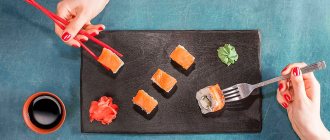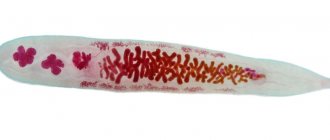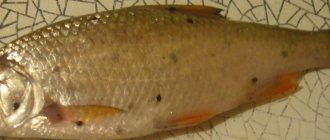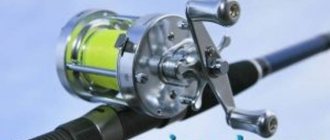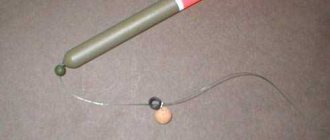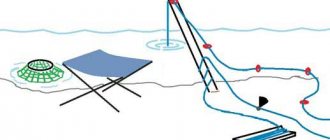Author:
Galina
12:09 | 29.09.2020
Heading:
Cuisine of the world
700
400
How many people in the world use chopsticks? There are three main ways of eating. There are more than 5 billion people living in the world. The way people eat can be divided into three types:
- eating food with your hands. About 40% of the world's population uses the “manual” method of nutrition. Residents of Southeast Asia, the Middle East and Africa eat with their hands, without using any cutlery. In Hinduism and Islam, food is sacred, given by God, dishes and cutlery (chops and forks) are “dirty” and are not used when eating food.
- 30% of the population eats with chopsticks. Countries such as China, Korea, Japan, Taiwan, Vietnam, etc. use chopsticks.
- And 30% of the population uses the cutlery we are used to: fork, spoon, knife. This method is used in Europe, America, Russia, etc.
What are the names of Chinese chopsticks?
Archaeologists claim that Chinese chopsticks were invented in China about 3 thousand years ago (Shang era). Modern Chinese call them kuaizi. The legend said that one Chinese man broke out two small sticks and tried to get the meat that was boiling in the cauldron without getting burned. He got what he wanted. Today, the population of China can be divided into three groups based on the way they eat. Approximately 60% of the population uses chopsticks and forks (30% for each type of cutlery), the rest still eat with their hands.
Kuaizi, which are used in restaurants, most often have a length of up to 25 cm and a square base to prevent them from rolling. Weisheng kuaizi, chopsticks designed for one-time use, are also popular among the Chinese. They are not always perfectly processed, which is why they are examined for splinters before use.
From the history
Chopsticks are considered a traditional cutlery in East Asia, but Japanese restaurants have appeared in almost all cities of Russia. This is all explained by the growing popularity of Asian cuisine. But many Russians still don’t know how to use chopsticks. Someone is squeezing the rolls, holding the chopsticks with both hands. Someone spears food on a stick, like an ancient man on his spear. Many people completely abandon chopsticks and eat with a fork...
Such a controversial cutlery appeared in Ancient China. According to legend, it was invented by a certain Yu, who wanted to get a piece of meat from a hot cauldron. In China, chopsticks have their own name - “kuaizi”, and in Japan - “hashi”.
What are Chinese chopsticks made of?
The main material from which Chinese chopsticks are made is bamboo, but sticks made of sandalwood, ivory, and expensive woods can also be found. A little less often they are made of precious metals or plastic.
Basically, sticks are made so that they are not only practical, but also aesthetically pleasing. This is not just a food item, but also a unique work of art. The most expensive options are encrusted with precious stones.
Training video with step-by-step instructions. What else is convenient to eat with chopsticks?
They eat not only pieces of food with chopsticks, but also crumbly food. In the east, a bowl of rice is raised to the head, and quickly wielding the joined ends of the chopsticks, the grains of rice are sent directly into the mouth. If the bowl or plate is hot, then Easterners, on the contrary, tilt their heads towards the bowl. But the latter is unacceptable in decent establishments, and it is better to wait until the dishes have cooled down.
It is important to be able to grab pieces of an exotic dish with them.
Soups can also be consumed with nurabashi, hashi or kuaizi. At the same time, carefully snatch the grounds from the bowl, and sip the broth from the edge, as if from a cup. Chopsticks are also convenient for grasping sauerkraut, greens and spaghetti.
All manipulations are carried out with the upper stick, and the lower one remains motionless.
And, of course, a special place in oriental cuisine is occupied by rolls that do not recognize either forks or knives. However, using sticks to hold the rolls is quite simple. The rolls are grabbed by the sides, lifted and dipped in the sauce.
You need to eat a whole piece with chopsticks, without returning the leftovers back to the plate.
Trying to grab the center with the filling or thread the roll as if on a skewer can lead to its collapse. In addition, poking food with a chopstick is considered extremely inappropriate in some Eastern cultures.
The amazing mental abilities of the inhabitants of Japan are associated with highly developed hand motor skills, since children are taught to use hashi almost from infancy.
How to eat with Chinese chopsticks - step-by-step instructions
To truly experience the taste of Asian food, you should learn how to use chopsticks. This is a special ritual and in order to know it, you need to remember:
- One of the sticks is firmly fixed using the thumb and middle finger. Ideally, it should be immovable. If everything is fixed correctly, then the widest part will be on the bend between the index and thumb. The stick itself will be located on the middle finger. It is allowed (if convenient) to fix the stick on the ring finger instead of the middle finger.
- The second stick is placed between the thumb and index finger. The thumb on the second finger should be positioned so that it is slightly higher than the first stick.
- You can try using them. The food should be well grasped, and the sticks should touch, and not intersect or move apart. This is the only way to capture food well. You also need to make sure they are aligned. Otherwise, it will be impossible to use them.
- Make sure that the upper (wide) part of the sticks also does not cross when they converge. Be sure to decide for yourself at what level to hold the Chinese chopsticks - you can choose from the very base to the final part.
- When the sticks themselves are fixed, you can try to take food with them. For novice users, it is better to start with an angle of 45°C. Over time it can be increased. You must also remember that you can learn to eat a new dish with them only after you have already mastered the previous type of food. Noodles, for example, can only be eaten with chopsticks by professional users.
In order not to fall on your face and show your ignorance, you should pay attention to etiquette at the table when using these chopsticks.
- Chopsticks are not placed on the plate after the end of the meal; it is prohibited to insert them in a vertical position into food.
- Chopsticks are meant to be used to pick up food, not to pierce.
- It is not permissible to move dishes using chopsticks.
- Food is not transferred from stick to stick. Such an event is only permissible at Chinese funerals.
- First you need to choose a dish and only then pick it up with chopsticks, and not shake them over the table in search of food.
Recipe: how to make temaki sushi
This is not exactly the roll that you will be shown in a store or even a pseudo-Japanese restaurant. Temaki sushi is something like a South American burrito, only without the tortilla and lamb.
The illustration below shows different types of sushi, including temaki sushi. Temaki sushi looks like this: it has the shape of a cone, like an ice cream cone. Did you find them in the top row on the right?
Photo by Annalise Batista, Pixabay portal
Step by step recipe
- Instead of corn tortillas, we use the same pressed seaweed.
- Rice is placed on them, and the filling is placed on the rice.
- We wrap one corner of the seaweed cake, covering part of the filling, followed by another corner. It turns out something like a pancake with filling.
- We tuck the bottom edge of the green flatbread and we get a sort of Japanese burrito.
- Here you can do without chopsticks - just your hands and teeth.
Appetizers include shoyu (soy sauce), wasabi (Japanese horseradish), gari (pickled ginger), and vegetables.
Sushi can have a wide variety of fillings: egg, octopus, yellowtail, tuna, salmon, shrimp and other interesting ingredients.
Not only sushi is eaten with chopsticks, but also noodles, rice, and snacks. When you learn to confidently pick up rolls with chopsticks, move on to other types of food.
Photo by Annalise Batista, Pixabay portal
How to choose the right chopsticks
To make using chopsticks comfortable and enjoyable, it is important not only to learn how to maneuver correctly, but also to choose the right size.
To determine the size of the chopsticks for yourself, you need to know the distance between the index finger and thumb. Place your fingers so that a right angle is formed between them. The distance is measured strictly between the fingertips. The result obtained must be multiplied by 1.5. This way you will know the size you need.
Restaurants and other Chinese food establishments serve standard size chopsticks depending on the gender and age of the diner.
- For men – sticks 23 cm long.
- Women – 21 cm.
- Children under 3 years old - 13 cm, from 4 to 12 years old use chopsticks 14 cm long. From the age of 13, most children can switch to devices 20 cm long.
The sizes of the chopsticks are designed for the Chinese, who are often much smaller in parameters than Europeans. Because of this, Europeans may not find sticks of this length comfortable to use.
Simple tips on how to eat with chopsticks
In the modern world, every person is trying to somehow diversify their life, to make it brighter and more attractive, richer and more fun. We fill it with all the colors of life, thereby smoothing out acute problems and the annoying bustle of everyday life. In order to relieve emotional stress or, conversely, not to bring ourselves to the so-called brink of the limit, we have to attract our curiosity with something interesting and useful. We immediately plunge into the study of various kinds of cultures, greedily absorbing what seems unusual or close in spirit to us. So, let’s say, many of us are simply driven crazy by China and all its subtleties of existence. Some people are fascinated by the clothes of their favorite country, the history of the origin of most traditions, while others, on the contrary, are seduced by the cuisine, which is unusual for each of us with all the richness of the exotic. If you, dear friends, are more attracted by the latter, then be patient, find the recipes you like and be prepared to purchase the necessary utensils for preparing and serving dishes to your table. By the way, don’t forget to buy the appropriate cutlery in the form of Chinese chopsticks. They will play an important role in the meals of your family or friends, mentally transport you to China, fill you with incredible feelings of calm and goodwill, harmony and joy. This simple invention will be especially interesting for your children. They will gradually develop fine motor skills in their hands, which will bring them great pleasure. If you are new to this business and want to get simple tips on how to learn to eat with Chinese chopsticks, then stay with us in the vastness of our useful article. She will reveal many secrets for you, through which you will hone your skills and feel like a professional.
The birth of Chinese chopsticks
Holding wooden Chinese chopsticks in our hands, probably none of us today thinks about how and when they originated. Yes, this, in principle, will not seem like such important information, according to many, but you should not show negligence and disrespect for this object of Chinese culture if you are overcome by an uncontrollable desire to use these particular cutlery for a delicious family lunch or dinner. Before you take this traditional thing for the ceremony of eating food in the spirit of the Asian people, you should know that it appeared many years BC in China during the reign of the Shang-Yin dynasty (1764 - 1027 BC). But historians claim that this item appeared even earlier - about 4000 years ago, since its obvious presence can be traced during the life of Emperor Zhou.
Chinese ivory chopsticks were then made. They could only be used by people from the family of the emperor himself. This was considered a kind of luxury that ordinary people could not see, much less use as cutlery. Somewhere in 700-800 AD, such an opportunity was finally provided to ordinary passers-by. This important and valuable thing has appeared in almost every home, without which no family in China today can do, both on holiday and in everyday life. It is worth noting that this auxiliary tableware did not always play the role of, so to speak, a spoon or fork. At the very beginning of its appearance, it functioned in the kitchen of cooks as our current spatula for turning pieces of food when frying, but by the will of fate everything fell into place. And already in the modern world we are wondering how to eat this thing in a cafe, restaurant, at a party, at a party or at home, so as not to make a bad impression of ourselves among those around us.
Varieties of Chinese chopsticks
If you don’t know what types of Chinese chopsticks there are and how to use them correctly or other types, our tips will definitely help you quickly master the practice at home. By training daily with your family or friends, you will be able to accumulate incredible experience in this area in just a few days or even hours, pass it on to your children, who will also want to learn how to hold them in their hands at least to begin with, and then use them later. time to eat exotic food. But before we get to this point, we would like to tell you a little about the existing types of these cutlery from the Far East. Back in the 12th century, the Chinese seduced their neighbors with this simple thing; it seemed so convenient and practical to them that the Japanese, Koreans and other Asian peoples introduced this innovation into their daily lives. Since those distant times, each nation has developed its own model of sticks, giving them the desired shape, length and texture. Previously, the main material for the manufacture of these kitchen utensils was bamboo. It was carefully cleaned, polished, brought to the required thickness, divided in two and fastened together with separate auxiliary elements. Their final appearance was, of course, more reminiscent of large tweezers, which were called “kuaizu”. The Chinese came up with a separate form a little later; it has survived to our times and now enjoys enormous success among adherents of Chinese cuisine. The human desire to constantly change and improve has, of course, affected these cutlery.
Today they are made from various types of metals, wood, bone, plastic and much more. In restaurants, cafes and other establishments of this kind, preference is naturally given to disposable utensils made from cheap wood options, but for those who see in these items something more than just making the process of eating easier and more convenient, those on specialized counters The stores offer a wide range of products. Here you can find real masterpieces of art, both for amateur collecting and for home use. Carved kuaizu, usually made of sandalwood, cypress, cedar, pine, maple, willow and other most suitable natural materials, are varnished, painted, inlaid with metal, precious stones, complemented with original ornaments, etc. The shape of Chinese chopsticks also varies, ranging from square, pointed to rounded versions. In Japan, this cutlery is called “hashi”. The pronounced pointed ends of the wooden product and smaller size make them strikingly different from the neighboring invention “kuaizu”, but make them a little similar to the Vietnamese ones in external properties. The Korean people decided to give their preference to metal utensils for table purposes. For ease of use, they invented thin devices that appealed to almost all Korean citizens.
In general, every self-respecting state has its own merits, which it is proud of and differs from all other countries and cities. But one way or another, in addition to admiring Chinese chopsticks, you must be able to masterfully wield them at the table at home and in a public place, so as not to become the subject of ridicule and heated discussion of the gathered environment. Which is exactly what we are going to do now, dear friends. So, let’s learn to eat using Far Eastern cutlery correctly and skillfully.
Korean chopsticks
Korean chopsticks
Korean chopsticks are often made of stainless steel, while Japan and China use only natural materials. Because metal slides, these chopsticks have rough ends.
Another noticeable difference is that they are not the same length as those in Japan and China. Why are they made of metal? In ancient times, pure silver chopsticks were used only by emperors, as the silver changed color if the food was poisoned.
Only those close to the emperor used chopsticks; the rest of the population ate with their hands. Later, the prestigious metal stick gradually spread to other segments of the population. Another reason why Koreans use metal chopsticks is because Koreans eat rice with a spoon, but other foods can be eaten with slippery metal chopsticks.
Principles of using Chinese chopsticks
To learn how to properly hold the corresponding exotic dishes with Chinese chopsticks, it is better to start learning at home. This way, you won’t worry that friends or strangers might make fun of you, and the curious glances of strangers won’t become an eyesore and “burn” the back of your head. Put all your accumulated tasks aside for later, calm down mentally, and most importantly, relax. Take the props prepared in advance and start mastering the technique, referring to our provided tips in the photo and recommendations below:
- Mentally divide the sticks into upper and lower ones, as shown in the photo above.
- Relax your palm and fingers as much as possible, since if you are tense, you probably won’t be able to do anything meaningful.
- The little finger and ring finger should be lightly pressed together, while the middle and index fingers should be left alone.
- Now we take the lower Chinese chopstick and place it between the thumb and index finger so that its narrowed part rests slightly on the ring finger.
- We place the top product in the palm of our hand in the usual way, as usual, a pen or pencil.
- The first bites of food should be started with small pieces of food. Remember for yourself that in this work only the upper part of the cutlery acts, and the lower one remains motionless at all times.
In general, these are all the secrets that allow you to master all the principles of using Chinese chopsticks. If you are passionate about it and study your skills every day, you will achieve brilliant success. Without a note of embarrassment and uncertainty, you will be able to pamper yourself and your family with famous Asian dishes in public places, and you will not be embarrassed, as before, by managing special cutlery. The experience gained at home will help you always be on top and feel like a fish out of water in any restaurant.
Useful video instructions on how to use Chinese chopsticks
In Chinese version
So how to use chopsticks? If in a restaurant they brought you thick and long chopsticks, then this is clearly a Chinese version. They are comfortable, but first of all you need to learn how to hold them. The stick that has a thickening at the end rests on the base of the thumb, and the lower phalanx of the middle finger serves as a stand for the thin end. You need to press the stick with your thumb to fix the position. This stick performs a passive function - it supports food. But the second stick moves between the thumb and index finger when grabbing food.
But Khashi needs to be held differently. Here the passive stick lies at the base of the thumb. Almost halfway through, the stick rests on the upper phalanx of the ring finger. It turns out that the thumb, index and middle fingers form a ring. The active wand operates in this ring. The index finger is responsible for the movements.
Finally
Our article has come to its end, which told you how to eat sushi and rolls with Chinese chopsticks not only at home with family and friends, but also in restaurants and sushi bars. We hope that our provided information has become truly useful and exciting for you. But this is not the only step you have to take towards learning the intricacies of the Far East. Without your desire and desire to quickly learn how to use these cutlery anywhere, nothing will actually come of it. As in any other business, at first you will need to show responsibility and patience, attention and sleight of hand. It’s okay if you fail at the initial stage, only diligence will lead you to a positive result, be sure of it!
Learning to hold Chinese chopsticks correctly, tips for beginners
Chinese chopsticks are considered to be a common cutlery for residents of Asia and Japan, but the number of people who eat with them is equally correlated with the number of people on the planet who use a fork and knife for this purpose. Learning how to hold Chinese chopsticks correctly will help you eat desserts, noodles, rolls, sushi, as well as Asian dishes prepared using the stir-fry method with dignity. Eating with chopsticks is considered a meditative process that does not require fuss.
Varieties of Chinese chopsticks
The shape of the sticks can be round, flat, or cone-shaped. A distinctive feature of Chinese kuaizi sticks is their square base, which is convenient for using and fixing them on the table surface. Kuaizi are about 25cm long and cooking ones are about 38cm long.
Disposable devices are produced in individual paper packaging; they are made in factories from unprocessed bamboo or wood. Two disposable sticks are connected to each other at the top - this shows that they have not yet been used by anyone. China has imposed a tax on the use of disposable wooden utensils due to the large amount of raw materials required to make them.
Reusable chopsticks are washed and reused after eating, like other cutlery. They are also issued in restaurants or used as an individual device.
Materials used for manufacturing:
- food plastic;
- stainless steel;
- precious metals;
- varnished wood;
- Ivory.
Gift and collectible items are made from valuable wood, covered with gilding, picturesque images of paintings and patterns. Such devices are produced in individual and designer packaging, being a gift that symbolizes good luck, longevity or a happy marriage.
Types of devices
Only at first glance it seems that sushi chopsticks are always the same, but this is not so. They have different features and characteristics. The most common varieties are:
- Hashi is a Japanese version of chopsticks; over the entire period of its existence, they have not changed at all, only the material has been improved. In turn, the products are divided into gon fi - a long device for laying out food from a common plate to personal ones; Warisabi is a disposable device for tea ceremonies.
- Kuaizi - were invented in China, they differ in the shape of the base, it is square. Length - no more than 25 cm. For cooking and serving in portions, kuaizi 20 cm longer than table ones are used. It is convenient to eat with Chinese chopsticks, and they do not roll on the table surface - the square base makes them stable.
- Chokkorak is a heritage of Korean culture; it is made of metal and has a flat shape. Using chopsticks is not so convenient, especially for beginners - food constantly falls out, especially if it is small. In its original form, the main material was brass. The rods themselves are long and widen towards the base.
- Dua is a device used by Vietnamese citizens; it is much thicker than the Japanese or Chinese versions, but it is more convenient for them to eat. Duas are felt in the hand due to their massiveness. They thicken on one edge, while the other side remains thin, which is where food is picked up.
The listed types of devices are the most common; in addition to them, there are many others that vary depending on the state, historical roots and features of the form.
The variety of chopsticks testifies to the reverent attitude of representatives of Asian culture towards food.
Khasi
Kuaizi
Chokkorak
Dua
How to hold it correctly
In China, people learn to eat with chopsticks from early childhood, considering it useful not only for digestion, but also for the development of fine motor skills.
How to hold Chinese chopsticks correctly:
- Hold with your hand without tension, without protruding your fingers.
- Left-handers and right-handers alike should learn to hold utensils in their right hand.
- The thin ends, like tweezers, grab pieces of food; the thick ends are placed with a small protrusion in the place between the thumb and forefinger.
- Kuaizi are placed in the hand like writing instruments, with the protrusion being the same length.
- The lower stick is fixed in the hand and remains motionless, and its middle is placed on the ring or middle finger bent inside the palm.
- The upper, working stick is placed parallel to the lower one, being as if an extension of the index finger, held with the thumb and manipulated freely.
- When the thin ends of the kuaizi are closed, the upper ends open, and when the lower ends open, the upper ends converge slightly crossing each other.
If a piece of food does not fall out, then the kuaizi is held in the hand correctly. When eating, cutlery is always held with the palm facing down; turning the palm up is indecent. For food, it is customary to use only paired cutlery of the same length.
It is customary to eat sushi in whole portions, without biting or separating them into ingredients. Rolls and sushi are not completely immersed in soy sauce, but on the edge and on the side of the fish, if any.
Loose food is scooped up using a scooping motion so that it remains between two kuaizi.
How to eat sushi correctly
In restaurants, hashi is most often used for sushi, rolls, sashimi and other fish delicacies. You need to eat them as follows:
- Grab the portion from both sides so that one chopstick touches the rice and the other touches the fish. Try to pinch food at the center of gravity to make it easier to maintain balance.
- If desired, dip the dish in soy sauce or wasabi, fish side down. Then bring it to your mouth, sitting straight and without bending over.
- Eat a whole piece without putting the leftovers back.
- After finishing a portion of sushi or rolls of one type, eat a little canned ginger. It is used to neutralize tastes so that the sensations from different delicacies do not mix with each other.
If the cutlery moves freely, without excessive pressure, then it is taken correctly.
When eating sushi, it is important to handle it delicately, with minimal pressure. Otherwise, the dish may break or fall apart, which will have a bad effect on its taste and aesthetic qualities.
Features of training sticks
In the culture of eating with kuaizi, it is important not only to grab food with them, but also to capture it all the way to your plate or mouth. A fallen piece can put you in an awkward position and stain your clothes, so before using chopsticks in a public place, you should try repeatedly using them at home, temporarily replacing the rest of the cutlery. Training can be done on food or on objects, for example, on a piece of foam rubber.
For training, devices with rings for remembering the desired position of the fingers and children's models are produced.
A special feature of educational instruments is a special clamp or latch that connects two chopsticks and allows you to understand the process of holding chopsticks. You can ask for teaching tools at a restaurant or use them at home. There is a theory that mastery of kuaizi will come after 1000 meals consumed with their help.
From an ethical point of view
In Eastern culture, knowledge of how to properly use Chinese chopsticks receives positive reviews not only among certain nations, but also among our compatriots, since the process looks beautiful and authentic. For the Japanese, eating is a ritual that entails many conventions. In particular, chopsticks should not be licked, stuck into food, or passed on to neighbors at the table. If you touch a piece with chopsticks, you must eat it. And if you take food from a common dish, then you need to use the opposite end of the chopsticks. You cannot wave chopsticks, move dishes with them, or attract the attention of the waiter. When you finish your meal, do not put your chopsticks on your plate. In some countries, such an act may indicate hostility or dissatisfaction with the meal. It’s better to fold them next to the plate on a napkin. From an ethical point of view, you should not finish the soy sauce or eat all the wasabi that is included in the meal. These ingredients have a specific taste and should not be overused. That's the science behind how to properly handle chopsticks. Bon appetit!
Etiquette
Kuyazi are intended only for food, so it is unacceptable to perform other manipulations with them: knocking on the plate, pointing at someone, playing or licking leftover food. Dirty cutlery is wiped with a napkin, and plates are moved by hand.
It is impolite to hang your chopsticks over a common plate to search for food, touch neighboring cutlery, or push away pieces you don’t like. You need to wait until no one takes food from the plate and take the nearest piece. Having touched food, you cannot put it back, but only transfer it to your plate or eat it.
Passing food with chopsticks is considered prohibited. The Japanese use chopsticks to transfer the bones of the deceased into an urn with ashes, so this action is associated with death and is impossible when eating. The Chinese allow food to be served first to the elderly and children, and then to themselves, which is regarded as respect.
When eating with chopsticks, it is prohibited to stick them into a bowl of rice, which is done only with funeral food intended for the deceased. It is unacceptable to clench the chopsticks in a fist and cross them over the plate. During a break between meals, the Japanese place their chopsticks on a special stand so that the thin ends point to the left. In China, at the end of a meal, kuyazi is placed parallel to each other on the edges of the plate, also with the thin ends to the left.
Kuaizi has been used in China for about 3,000 years, and for those starting to use Chinese chopsticks, this art will become accessible after repeated repetition. Slow absorption of food creates harmony and allows you to perceive flavors more clearly.
Traditions and rules of etiquette
Residents of eastern countries associate the use of hasi at the table with many superstitions and cultural customs. Some of them:
- It is forbidden to knock, wave, or move chopsticks on the table - they are used exclusively for eating food. Pointing at someone with the tips of your hashi is considered as indecent as pointing with your finger.
- Hashi clenched in a fist is a sign of aggression. Plates laid out across or crossed cutlery are perceived similarly.
- It is considered a bad omen to stick chopsticks into food - this is what they do at funerals. For the same reason, food is not transferred from one Khasi to another.
- It is forbidden to feel the food in a common plate with chopsticks, choosing the best portion for yourself. According to etiquette, a person is obliged to take the piece of the dish that his cutlery touched first.
- When not in use, hashi is placed on a plate parallel to the edge of the table with the thin ends to the left. Leaving them on the tablecloth is considered indecent.
- Do not lick the chopsticks or hold them in your mouth for a long time. This is not only impolite, but also violates hygiene rules.
It is important to remember that in the culture of East Asian countries, Khasi is considered not just a cutlery, but also a magical symbol, a connection between man and the earth. Therefore, all the associated traditions and rules of etiquette must be well remembered, otherwise you can easily offend the hosts of the table.
Why is it still customary in China and Japan to use chopsticks rather than spoons and forks?
Guys, we put our hearts into Bright Side. Thank you for revealing this beauty. Thanks for the inspiration and goosebumps. Join us on Facebook and VKontakte
Traditionally, chopsticks are used not only in China, but also in Japan, Korea, and Vietnam. This means that more than a third of humanity eats with chopsticks, and this does not include connoisseurs of oriental cuisine around the world.
Bright Side decided to figure out how this ancient tradition appeared and why it is still alive today.
Tribute to the past
Metal chopsticks. Tang Dynasty (618−907), China.
Legend has it that chopsticks were invented by Yu the Great, the mythical ruler of China who allegedly lived in the 3rd millennium BC. e. They say that one day he simply broke off two branches from a tree in order to get hot meat from the cauldron and not get burned by the boiling water. Archaeologists, however, believe that sticks were invented much earlier - about 9,000 years ago . In a unique culture closed from the outside world, the tradition of eating with chopsticks has become so firmly established that it not only remains popular in the 21st century, but also acquires new meanings.
Philosophical approach
Based on traditional Chinese philosophy, the fork and spoon are symbols of war, while chopsticks correspond to the teachings of Zen , which calls for non-violence. In addition, the two sticks, one held and the other moved, represent the passive yin element and the active yang element.
Even the appearance of the stick speaks volumes: the narrow rounded end is the sky, and the widened square end is the earth. The fingers between the two sticks represent humanity, which feeds on heaven and earth. But that's not all! The traditional length of the stick is 7 Chinese cun (about 23 cm) and 6 fen (about 2 cm) - 7 feelings and 6 desires described in Buddhist theology.
Quality of food intake
While many of us have difficulty mastering chopsticks, the Chinese believe that eating with them is not only convenient, but also extremely healthy. Of course, forks and spoons simplify the process, but with chopsticks, eating can take longer. But this is their advantage: chopsticks allow you to eat slowly and consciously , as a result of which the body absorbs food more easily.
In addition, you will be full earlier and end up eating less, because when spoon after spoon is sent into your mouth, the body simply does not have time to understand that it has received enough and demands more.
How to use chopsticks correctly
1. Hold one of the sticks between the joint of your thumb and index finger. Hold it with your ring finger and thumb, and clasp your index and middle fingers together.
2. Place the second stick parallel to the first - on the phalanx at the base of the index finger, and hold it with your thumb and middle finger (almost like holding a pencil).
3. Straighten your middle finger and the sticks will move apart; bend it and the sticks will close. Use them like tongs, but only manipulate the top stick and keep the bottom one still.
4. Now you can start eating.
Bonus: some interesting facts
- Each country has its own name for chopsticks. In China it is kuaizi, and in Japan it is hasi. Korean chopsticks are called chokkorak, and Vietnamese chopsticks are called dua.
- Chopsticks are made from wood, plastic, bone, jade and other materials. Wooden ones are popular in China, but Korea is the only country where it is customary to eat with metal chopsticks.
- Chinese people use and throw away 45 billion pairs of disposable wooden chopsticks every year.
- Considering all of the above, it is not surprising that the Kuaizi Museum, which contains about 2,000 pairs of chopsticks, has been opened in Shanghai, the largest city in China.
Do you know how to use chopsticks?
Chinese chopsticks: rules of etiquette
Chopsticks are a traditional cutlery of Southeast Asia. These unique tweezers have been used by residents of Japan, China, Korea and Vietnam for several centuries. But their homeland, according to researchers, is China. Sticks appeared in the Celestial Empire 3000 years ago. According to legend, they were invented by Great Yu, the founder of the first imperial dynasty. He wanted to get pieces of meat from a cauldron of hot broth. He managed to do this only with the help of two bamboo sticks. Since then, cooks have used “tweezers” to deftly turn pieces in pans. After some time, chopsticks became the main cutlery. In the 12th century, they came from the Middle Kingdom to Japan, Korea and Vietnam.
The first Chinese chopsticks, or kuaizi, were made of bamboo. To obtain this cutlery, it was necessary to split the trunk in two. That is why they resembled tweezers. The Kuaizu separated only a few years later. Today, Chinese chopsticks are made from wood, metal, plastic and bone, usually with a square base. Their length is approximately 25 cm.
In Japan, chopsticks are called o-hashi. Initially, they were also made of wood and were quite simple in appearance, but over time they began to be varnished and designs were applied to them - pine as a symbol of longevity, bamboo, meaning vitality, etc. Japanese chopsticks are shorter than Chinese ones and have more pointed ends to make it easier to remove the bones from the fish. In the 16th century, the famous master of the tea ceremony, Sen no Rikyu, invented o-hashi with pointed ends on both sides in order to taste several dishes at once without mixing flavors. By the way, the Japanese also came up with miniature stands for chopsticks - hasioki.
Koreans have thin devices 15-20 cm long. They are made mainly of metal. Previously, brass was used, but now, as a rule, stainless steel.
Interesting
Some Asian companies conduct a basic motor coordination test when hiring personnel. They offer the applicant to quickly transfer small beads with chopsticks. Most often, workers at enterprises that assemble chips and liquid crystal displays are subjected to this test.
National souvenir
For the Japanese, hashi is a very personal item that should not be given to other people. Therefore, restaurants do not serve metal or ceramic utensils, but use disposable ones called varibashi. Therefore, you don’t have to worry about hygiene; you can calmly learn how to use chopsticks and then dispose of them.
Chopsticks began to be used almost 3 thousand years ago in China, and they came to Japan only in the 12th century. Initially, the sticks were made of bamboo and they resembled tweezers. Later, wood, plastic and ivory were used for production. The Japanese do not favor metal chopsticks, as they can damage tooth enamel. The Chinese begin to teach children how to use chopsticks from an early age, and already a two-year-old child can easily handle such a device. Chinese chopsticks are approximately 20 cm in length. They are quite thick and easy to handle. In Japan, chopsticks are 5-10 cm shorter and, in addition, they have sharp tips. There is also a Korean version of chopsticks - chokkarak. They are made from stainless steel. Only an experienced eater can use them, so to a European they will seem too thin and inconvenient.
